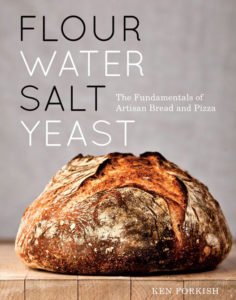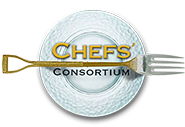Archive for May 2016
Easy & Delicious Asparagus Recipes To Celebrate Spring

Local spring asparagus available at Chatham Berry Farm

Ingredients readied for couscous and spring asparagus recipe including Old Chatham Sheepherding Creamery’s Kinderhook Creek, a soft-ripened sheep’s milk cheese

Organic whole wheat couscous for sale at fantastic bulk food department at Honest Weight
Although the winter of 2015-2016 lacked snow in the Hudson Valley of upstate New York, it was a long winter and spring has been slow in coming. Now with spring here and Albany’s 2016 Tulip Queen anointed, it’s time to be on the lookout for (local and organic) rhubarb and asparagus, in particular, but recent trips to the Troy Waterfront farmers market in nearby Rensselaer County and to my local food co-op, the Honest Weight in Albany, have not resulted in finding (yet) a nearby source for local and organic rhubarb or asparagus. The co-op did have for sale conventional asparagus from New Jersey and organic rhubarb from Oregon, but I’m still waiting for the local and organic bounty.
But there was some success in finding local and organic asparagus 30 miles south of Albany at the Chatham Berry Farm, a farm and farm store which specializes in “natural, organic and local produce and products as well as no spray, pesticide-free greens and vegetable from its greenhouses throughout the year.” To my surprise, the farm store in rural Columbia County had organic asparagus grown by grower Mitchel Falls in Colonie, an Albany suburb. At $4.99 per pound, I began to ponder why more local farmers and gardeners (this writer included) don’t maintain a bed or two of the perennial. As the Old Farmer’s Almanac says, “It may take 2 to 3 years to get started and produce, so patience is needed!” But then the grower will have a delicious vegetable that has always been prized.
And in addition to its culinary attributes, asparagus has been valued for its medicinal value for hundreds of years. According to Edible, An illustrated guide to the World’s Food Plants (Washington, D.C., National Geographic Society, 2008, www.nationalgeographic.com/books), asparagus was “a favorite of the Romans, who cultivated spears much larger than modern cultivars.” Edible notes also that in Italian folklore, asparagus was even touted as an effective form of birth control. Hmm, the distinctive odor in one’s urine from eating asparagus perhaps spawned this theory? Edible also points out that the botanical name for asparagus, officinalis, means “from the dispensary” and that it is “a diuretic and a laxative.” In addition, it has been thought over the ages to help with eye problems, toothache, cramps, and sciatica. Who knows? But what cooks do know, asparagus is delicious.
The handy, stand-by cookbook, Joy of Cooking by Irma S. Rombauer, Marion Rombauer Becker, and Ethan Becker (New York, NY: Scribner, 1997), provides some helpful tips in selecting and cooking asparagus. The thinner the shoot, the younger and according to Joy of Cooking, “usually the tenderer.” Further, the shoots can be green, purple, or green and purple. And this tip is much appreciated: Select crisp, tightly closed stalks whose cut ends are not dry. Asparagus is perishable, so plan to serve it the day of harvesting or purchase, In the meantime, submerge the ends of the spears in a pitcher of water and refrigerate.
We also love Tracey Medeiros’s The Vermont Farm Table Cookbook, 150 Home-Grown Recipes from the Green Mountain State (The Countryman Press, Woodstock, VT, Distributed by W.W.Norton & Co., New York, NY, 2013), and pleased to share with our website users this easy and delicious recipe for Asparagus and Brown Rice, a favorite of Jane Pomykala, co-owner of Pomykala Farm in Grand Isle, Vermont, north of Burlington on Lake Champlain, who likes to make this hearty meal in the spring, when asparagus first appears on the scene. This simple dish is bright with citrus notes from the lemon zest and juice, as well as a subtle nuttiness from the brown rice and Parmesan cheese.
Asparagus and Brown Rice (Serves 4 as a main course or 6 as a side dish)
Ingredients
1 1/2 cups short or medium-grain brown rice
3 1/2 cups low-sodium chicken broth, or as needed
1 tablespoon unsalted butter
1 1/2 pounds asparagus, trimmed and sliced diagonally into 1-inch pieces
1 small bunch scallions, white and green parts, chopped
1 ounce Parmesan cheese, grated (1/2 cup)
1 teaspoon grated lemon zest plus 1 tablespoon juice
Kosher salt and freshly ground black pepper
1 1/2 teaspoons chopped fresh thyme
Method of Preparation
Place the rice in a fine-mesh strainer and rinse thoroughly. Place the rice and broth in a medium saucepan and bring to a simmer over medium heat. Cover tightly, reduce the heat to low and cook until tender and most of the liquid has been absorbed, about 40 to 45 minutes.
Melt the butter in a medium skillet over medium heat. Add the asparagus and scallions and sauté, stirring occasionally until tender, about 6 to 8 minutes. Transfer to a medium bowl and add the rice. Stir in the cheese and lemon zest and juice. Season with salt and pepper to taste, sprinkle with thyme, and serve.
Asparagus and Whole Wheat Couscous (Serves 2 as a main course)
Using some of my favorite local ingredients, as well as green garlic just harvested from my backyard garden and organic whole wheat couscous and raw, unsalted pistachio meats from the Honest Weight Food Co-op’s amazing bulk foods department, with its hundreds of bins of bulk foods, I decided to concoct a variation on the above Asparagus and Brown Rice recipe.
Couscous cooks up in minutes and when there’s not enough time to cook rice or another grain, I like to use organic whole wheat couscous. Made from coarsely ground, precooked semolina wheat, couscous is properly described as a pasta, not a grain. Also, I’ve substituted green garlic harvested from my backyard garden for the scallions in the recipe above. And my discovery of the special flavor of pistachios prompted the addition of raw unsalted & organic pistachio meats, also available at the co-op’s bulk food section. Although priced at $28.49/pound, only a handful are needed to add texture and additional flavor.
Ingredients
1/2 cup of whole wheat couscous
1 cup water
1 tablespoon of olive oil for couscous preparation; 1 to 2 tablespoons of olive oil for sautéing the green garlic & asparagus
1/2 pound of asparagus spears, trimmed and sliced into 1 to 2 inch pieces (depending on thickness)
1/2 cup of chopped green garlic
Handful of pistachio meats
A favorite local cheese either grated or cubed as desired for flavor (I cubed a small piece, about an ounce, of Old Chatham Sheepherding Creamery’s creamy and delicious, soft-ripened Kinderhook Creek sheep’s milk cheese)
Method of Preparation
Bring one cup of water and 1 tablespoon of olive oil to a rolling boil in a small sauce pan. Add 1/2 cup of whole wheat couscous. Stir once. Cover tightly and immediately turn off heat.
Heat up the 2 tablespoons of olive oil in a medium skillet over medium heat. Add the chopped green garlic and asparagus pieces and chopped green garlic, lowering heat slightly, and sauté while stirring for about 4 minutes, add the handful of raw pistachio meats and continue stirring for an additional 2 to 3 minutes until the asparagus is tender.
Serve the sautéed asparagus, green garlic and pistachios on the couscous, topping the dish with the cubed (if a soft cheese like the sheep cheese used in my preparation) or grated cheese.
Additional asparagus recipes: For more challenging recipes using spring asparagus, New York Times City Kitchen columnist, David Tanis, offered three appealing ones in The Incomparable Stalks of Spring, a recent column in the paper.
(Frank W. Barrie, 5/20/16)
Wholesale Market For Local Farm-Fresh Produce Now Operating At NYC’s Hunts Point
The Hunts Point Produce Market in the Bronx is the largest wholesale produce market in the world. Sitting on 113 acres, it includes 1 million square feet of interior space. Its produce, according to its website, is delivered fresh daily via plane, boat, and tractor trailer from 49 states and 55 countries. This Goliath of produce markets, open five days a week, 24 hours a day, caters to a “region in the world with an estimated population of 22 million” and “generates $2.4 billion in sales annually.”
The Hunts Point Produce Market is now also the home to an open-air wholesale farmers market for locally grown food, managed by GrowNYC. Offering “over 100 local and regional farm-fresh products including fruits, vegetables, herbs, plants, and flowers at competitive wholesale prices and quantities,” according to Grow NYC, “the majority of the products are harvested less than 24 hours before being sold.” The vendors at its wholesale farmers market at Hunt’s Point in the South Bronx “grow their own produce and sell direct to NYC buyers.”
A praiseworthy non-profit organization, GrowNYC also operates nearly 100 farmers market throughout New York City, including the well-known Union Square Greenmarket. In addition, it supports community gardens throughout the five boroughs, and offers educational programs including Grow to Learn, a city wide school gardens initiative.
The farm to table movement has been championed by many chefs in New York City, reflected in the lengthy list of restaurants included in our New York dining directory. GrowNYC’s wholesale greenmarket, now operating at the Hunts Point Produce Market at 290 Hillock Street (at Viele Avenue), from 2:00AM to 8:00AM, Tuesday through Saturday (from early April to the end of December) will make it much easier for local and regional small farms to hook up with chefs and restaurants, that are especially mindful of the sourcing of ingredients for their menus.
As pointed out by a recent editorial in the New York Times, From Farm to Table, via the Bronx, “Historically, it has been difficult for local farmers to pay the fees or follow the arcane rules of consignment necessary to sell in the Hunts Point market.” Kudos to GrowNYC for better linking Gotham to food grown in upstate New York and the regional tri-state area.
[GrowNYC’s wholesale greenmarket at Hunts Point Produce Market, 290 Hillock Street (at Viele Avenue), Tuesday through Saturday (early April to end of December) 2:00AM-8:00AM]
(Frank W. Barrie, 5/10/16)
Pizza Night At Ken’s Artisan Bakery In Portland, Oregon

Ken Forkish’s cookbook won the James Beard Foundation’s outstanding Baking & Dessert cookbook as well as the International Association of Culinary Professionals’ award for outstanding Baking cookbook in 2013
Ken Forkish opened Ken’s Artisan Bakery fifteen years ago in Northwest Portland, an urbane residential and retail area of the city, with Old Portland-style houses, grand old apartment buildings and sleek new condominiums, plus adjoining parkland made for hiking. A perfect neighborhood for Ken’s Artisan Bakery, which has earned national attention and praise for its bread, croissants, and fruit tarts. The bakery has also become known for its Monday pizza nights.
In fact, the success of the Monday pizza nights at the bakery led to the opening of Ken’s Artisan Pizza in Southeast Portland on the east side of the Willamette River that passes through Portland. Pizza lovers can now savor Ken’s artisan pizzas any day of the week in a restaurant seating 55 plus 10 at the bar and an additional 16 seats in the summer months on the sidewalk.
Still, every Monday, flocks of Portlandians come out for pizza at the original bakery, and I had the pleasure of joining the crowd. Ah, pizza. I’ve been a pizza fiend ever since I can remember. I favor a crispy, thin crust to a doughy one, and love cured pork atop it: why we went for the two porkiest options on the pizza menu—the Soppressata (cured, dry sausage) pie with basil from the bakery’s garden and the Fennel Sausage.
The pizzas arrived piping hot. A delicate tomato sauce rested atop the flaky crust, along with fresh mozzarella and herbs. Delicious! While recommending one 12” pizza per person, a single pie was certainly generous enough to feed two with the addition of a Caesar salad and a couple of irresistible dessert pastries. A pair of scrumptious complimentary shortbreads accompanied the bill.
The service was friendly and attentive even though the bakery was busy. And my sourcing questions were answered patiently and thoroughly. An abundance of local produce abounds, like salad greens and arugula from Millennium Farms, and carrots and potatoes from rotating urban farms. For its pizzas, the bakery uses an assortment of imported and domestic meats and cheeses, sourcing mozzarella and sausage through Provvista Specialty Food (a wholesale distributor of specialty foods based in Portland, whose motto is “simple authentic food”), Oregon ham from Carlton Farms (based in northwest Oregon’s Yamhill Valley and which produces “handcrafted natural meats” by working with “a select team of handpicked local and national growers who raise animals to our exacting standards”), hot dogs and charcuterie from Oregon’s first USDA approved salumeria, Olympia Provisions (all its cured meats are aged naturally and slowly using antibiotic-free Pacific Northwest pork), and goat cheese from Portland Creamery (where the goats can be spied roaming pastures “just outside the creamery window,” 35 miles south of Portland in Molalla, Clackamas County).
Surprisingly, the wines were from overseas. We sampled the Marco Felluga Pinot Grigio from gorgeous Collio (in the Friuli-Venezia Giulia region of northeast Italy, between the Adriatic Sea and the Alps).
Not surprisingly, however, the bakery’s flour is sourced from Shepherd’s Grain. Founded by Karl Kupers and Fred Fleming, wheat farmers dedicated to sustainable agriculture, they have expanded their operation to include nearly 60 other wheat farmers (from three geographical areas, southern Alberta, Pacific Northwest and southern California). Shepherd Grain farmers “do less to the soil so that nature can do more” by practicing no-till, direct seeding agriculture.
Ken’s Artisan Bakery does Shepherd’s Grain farmers justice with its superb pizza crust, prepared by combining the bakery’s own house-made poolish (a French baking term used for a pre-ferment or bread starter, also known as a “sponge,” based on baker’s yeast) with the mindfully grown wheat flour. It works sourdough wonders, and makes particularly tasty leftovers.
With praiseworthy ingredients matched with skilled baker Ken Forkish at the helm, Ken’s Artisan Bakery’s pizza night deserves its reputation as the destination for pizza lovers on Monday nights in Portland.
Ken’s Artisan Bakery’s Cafe, 338 NW 21st Avenue, 503.248.2202, Bread, pastries, cookies, sandwiches, soups & salads: (Bakery hours) Mon-Sat 7:00AM-6:00PM, Sun 8:00AM-5:00PM, Pizza night: Mondays 5:30PM-9:30PM and Ken’s Artisan Pizza, 304 SE 28th Avenue, 503.517.9951, Dinner: Mon-Sat 5:00PM-10:00PM, Sun 4:00PM-9:00PM
(Lucas Knapp, 5/2/16)
[Editor’s Note: Ken’s Artisan Bakery and Ken’s Artisan Pizza are both included in our special Farm to Table pizza directory which has listings for nearly thirty farm to table, artisanal pizza restaurants and bakeries in the U.S. and Canada. Also recommended, for homemade pizza recipes, is Ken Forkish’s Flour, Water, Salt, Yeast, The Fundamentals of Artisan Bread and Pizza (Ten Speed Press, Berkeley, California, 2012), beautifully illustrated with photographs by Alan Weiner. The cookbook won the James Beard Foundation’s 2013 award for best Baking and Dessert cookbook as well as the 2013 award for outstanding Baking Cookbook from the International Association of Culinary Professionals (IACP). It includes recipes for Neapolitan-style pizzas and rustic boules (both straight doughs and doughs made with pre-ferments). The directions and insight for making your own levain culture and the “iron-skillet pizza” recipes (a great way to make pizza without a pizza stone, tossing dough, setting it up on a peel and transferring to a preheated pizza stone), in particular, caught my eye. And Ken Forkish’s new cookbook, The Elements of Pizza, Unlocking the Secrets to World-Class Pies at Home (Ten Speed Press, Berkeley, California, 2016) has just been published. FWB]












